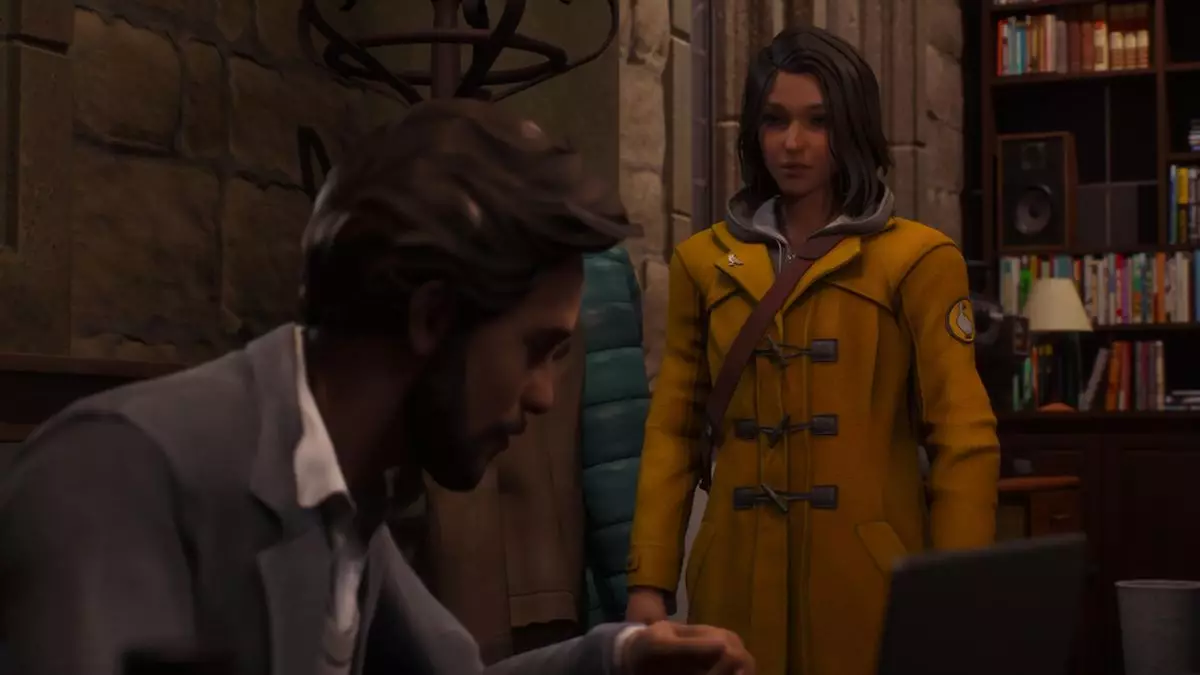In the intricate world of “Life is Strange: Double Exposure,” players find themselves entangled in a web of mystery and intrigue as they navigate the challenges presented by Lucas’ office. This section of the game serves as a pivotal moment, allowing players to uncover crucial information about Maya Okada, a student whose untimely death has raised questions and suspicions. This article aims to provide a comprehensive guide to unraveling the secrets hidden within Lucas’ office, ensuring players have a smooth experience while exploring the Dead World timeline.
After engaging in insightful dialogues with characters like Gwen, Yasmin, and Vinh in the Living World, players are thrust into the dimly-lit confines of Lucas’ office. This point marks a transition where Max, our protagonist, seeks to delve deeper into the life and relationships that surrounded Maya. The effectiveness of this exploration is heavily influenced by the decisions players have made up until this point. Lucas’ reaction and the information he shares can vary significantly, highlighting the importance of player choice in shaping narrative outcomes.
Once the conversation concludes, it becomes imperative for Max to begin her search for clues. Players should make their way to the nearest Shift point near the café to activate the Dead World timeline. Entering Lucas’ empty office may initially seem daunting due to its clutter, but persistence pays off. The space is filled with interactive elements that not only contribute to the gameplay experience but also enrich the storyline.
Max’s first task in the office involves sifting through the contents of the filing cabinet. Players must open the bottom drawer and examine the various documents to obtain valuable insights. Here, players will uncover connections between Maya, Vinh, and Safi as they all share a common past as classmates. One striking revelation is Lucas’ dual role as a tutor and a close observer of Maya’s work, adding layers to his character and raising questions about his intentions.
Yet, players may find themselves at a standstill when searching for the elusive key necessary to unlock certain areas within the office. It’s worth noting that some players have encountered glitches during their exploration, which can hinder progress. If players experience such an issue, reloading the most recent save file typically resolves the problem.
Once the key is located, which is cleverly concealed under the photograph on Lucas’ desk, a whole new dimension of exploration opens up. By rotating the frame carefully, players can spot the key taped underneath, a clever design meant to encourage thorough investigation. With this key in hand, Max can now access locked compartments throughout the office.
The highlight of Lucas’ office exploration is ultimately the discovery of a hidden manuscript inside the golden typewriter tray. This manuscript serves as a shocking revelation, exposing Lucas’ unethical behavior—he has plagiarized and profited from the work of his former pupil, further complicating the moral landscape of the game. Such revelations propel the narrative forward, emphasizing themes of trust, betrayal, and the exploitation of talent.
After uncovering the manuscripts, players must take a snapshot juxtaposing the two works, cementing the evidence of Lucas’ wrongdoing. This moment is crucial as it sets up tension for the ensuing confrontation between Max and Safi. The emotional weight of Max’s actions in disseminating information about Safi’s struggles becomes a pivotal point of conflict that reflects on broader issues of accountability and consequence within the story.
Ultimately, the exploration of Lucas’ office in “Life is Strange: Double Exposure” is more than just a search for clues; it embodies the essence of player choice, narrative complexity, and moral decision-making. As Max uncovers truths that shape relationships and propel the storyline, players are reminded of the profound impact their actions hold within this emotionally charged universe. Engaging with the characters and confronting the repercussions of past choices becomes an integral part of the gaming experience, making each discovery in Lucas’ office a significant step in unraveling a deeper narrative woven throughout the game.

